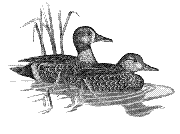United States Fish and Wildlife Service

Waterfowl Management Handbook
Date of this Version
January 1990
Abstract
Under natural conditions, Canada geese are protected from predatory mammals by selecting nest sites on islands, muskrat lodges, cliffs, or snags, or nests made by ospreys or other motors. The limited availability of safe natural sites seems to hold many goose populations below limits set by other habitat factors. The use of artificial structures to provide safe nest sites for Canada geese in North America began more than 50 years ago; structures are now among the most widely used, and most successful, of goose management practices.
Structures are considered any artificial device, with the exception of earthen or rock islands, intended to provide a safe nest site for Canada geese. In some situations artificial islands are preferable to structures, but artificial islands are beyond the scope of this chapter.


Comments
Published in Diana H. Cross and Paul Vohs (eds.) Waterfowl Management Handbook. Fort Collins, CO: U.S. Fish and Wildlife Service, 1988. Online at http://www.nwrc.usgs.gov/wdb/pub/wmh/contents.html